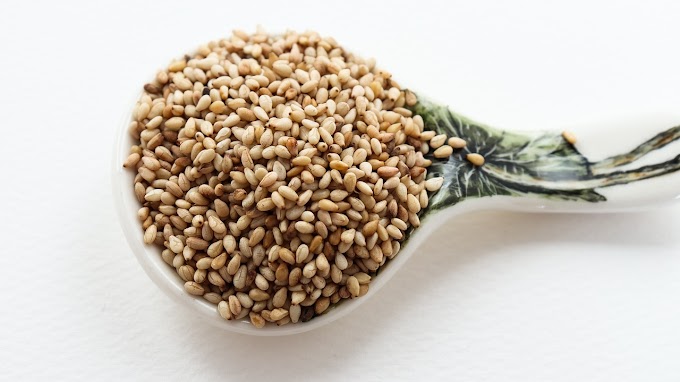What does the liver do?
This article will discuss the primary functions of the liver, its regenerative capabilities, the consequences of impaired liver function, and strategies for maintaining liver health. The liver, the largest solid organ in the body, is integral to over 500 bodily processes and significantly contributes to digestion. Its responsibilities encompass detoxification, synthesis of proteins, and the generation of enzymes crucial for food digestion, rendering it a fundamental component of the digestive system.
The liver, located in the upper right part of the abdomen just below the diaphragm, typically weighs around 3 pounds, although its weight can vary from person to person. It's worth noting that the liver is the heaviest and largest internal organ in the body. The liver's structure is roughly triangular and is divided into two main lobes: a larger right lobe and a smaller left lobe. These lobes are separated by a band of tissue known as the falciform ligament, which serves to anchor the liver to the diaphragm. Surrounding the liver is a protective layer of fibrous tissue called Glisson's capsule, which is further covered by the peritoneum, a membrane that lines the abdominal cavity. This dual-layered covering not only helps secure the liver in its position but also shields it from potential physical harm.
Blood Vessels
The liver is unique among organs in that it receives blood from two primary sources. One source is the portal vein, which delivers nutrient-rich blood from the digestive system. The second source is the hepatic artery, which transports oxygenated blood from the heart. Within the liver, these blood vessels branch into smaller capillaries, ultimately leading to the formation of lobules. These lobules are the liver's functional units, comprising millions of cells known as hepatocytes. To complete the blood circulation process, three hepatic veins exit the liver, carrying blood away from it.Bile Production: The liver produces bile, a mixture of bile salts, cholesterol, bilirubin, electrolytes, and water, which aids in the digestion and absorption of fats, cholesterol, and certain vitamins in the small intestine.
Bilirubin Metabolism: It plays a crucial role in absorbing and metabolizing bilirubin, a product of hemoglobin breakdown. The liver stores iron released from hemoglobin for the production of new blood cells.
Blood Clot Support: The liver is involved in blood clotting by synthesizing clotting factors with the assistance of vitamin K, which is absorbed in the presence of bile. Adequate bile production is essential for this process.
Fat Metabolism: Bile produced by the liver aids in breaking down and emulsifying fats, making them easier to digest and absorb.
Carbohydrate Metabolism: The liver stores carbohydrates in the form of glycogen, which can be converted into glucose, regulating blood sugar levels and providing a quick energy source when needed.
Vitamin and Mineral Storage: The liver stores fat-soluble vitamins such as A, D, E, K, and B12, as well as iron and copper. These reserves support overall health and nutrition.
Protein Metabolism: Bile also plays a role in breaking down proteins during digestion, contributing to the body's nutrient absorption.
Blood Filtration: The liver acts as a filter, removing various compounds from the bloodstream, including hormones, drugs, and other substances, thereby maintaining chemical balance in the body.
Immunological Function: The liver is a key component of the mononuclear phagocyte system, housing immune cells like Kupffer cells. These cells combat disease-causing microorganisms that might enter the liver through the gastrointestinal tract, enhancing the body's defense mechanisms.
Albumin Production: The liver synthesizes albumin, the most abundant protein in blood serum. Albumin plays a crucial role in transporting fatty acids and steroid hormones, contributing to proper blood pressure and preventing blood vessel leakage.
Angiotensinogen Synthesis: The liver is responsible for producing angiotensinogen, a hormone that raises blood pressure by constricting blood vessels. This response is triggered by the release of renin from the kidneys.
In summary, the liver is a remarkable organ with a multitude of functions, ranging from digestion and nutrient metabolism to immune support and blood pressure regulation, making it a critical component of overall health and well-being.
In the case of mice, removing two-thirds of the liver prompts the remaining tissue to swiftly regrow and restore full function within a mere 7 to 10 days. In humans, the regeneration process takes slightly longer, typically occurring within 8 to 15 days. Surgical removal of either the right or left lobe of the liver leads to the complete restoration of liver mass within three months, with peak cellular activity observed between 7 and 10 days post-procedure.
As this remarkable regeneration unfolds, the new liver tissue gradually becomes indistinguishable from the original tissue it replaces.
Several compounds play pivotal roles in facilitating liver regeneration, including growth factors and cytokines. Among the critical compounds involved in this process are, but not limited
* Hepatocyte growth factor
* Insulin
* Transforming growth factor-alpha
* Epidermal growth factor
* Interleukin-6
* Norepinephrine
Maintaining a healthy liver is crucial for overall well-being. To ensure optimal liver function, the American Liver Foundation advocates the following guidelines:
Diet: Opt for a balanced diet, as excessive fat intake can strain the liver and contribute to conditions like fatty liver disease.
Alcohol moderation: Limit alcohol consumption to a maximum of two drinks at a time to prevent the gradual onset of liver cirrhosis.
Avoidance of illicit substances: Steer clear of illicit substances, which can burden the liver with toxins, hindering its essential functions.
Careful medication use: Exercise caution when combining prescription drugs and natural remedies, and refrain from mixing them with alcohol, as this can exert significant stress on the liver.
Protection against airborne chemicals: Minimize exposure to harmful airborne chemicals during activities such as painting, using strong cleaning agents, or gardening by ensuring proper ventilation and wearing a protective mask.
Travel precautions and vaccinations: Prioritize vaccinations, especially when traveling to regions where hepatitis A, B, or other liver-affecting diseases might be prevalent. Additionally, take preventive measures against diseases like malaria and yellow fever, which can impact liver health.
Safe sexual practices: Since there is no available vaccination for hepatitis C, practicing safe sex can significantly reduce the risk of contracting the disease.
Preventing exposure to blood and germs: Seek immediate medical attention if exposed to another person's blood or bodily fluids to mitigate the risk of contracting blood-borne liver diseases.
* Insulin
* Transforming growth factor-alpha
* Epidermal growth factor
* Interleukin-6
* Norepinephrine
Maintaining a healthy liver is crucial for overall well-being. To ensure optimal liver function, the American Liver Foundation advocates the following guidelines:
Diet: Opt for a balanced diet, as excessive fat intake can strain the liver and contribute to conditions like fatty liver disease.
Alcohol moderation: Limit alcohol consumption to a maximum of two drinks at a time to prevent the gradual onset of liver cirrhosis.
Avoidance of illicit substances: Steer clear of illicit substances, which can burden the liver with toxins, hindering its essential functions.
Careful medication use: Exercise caution when combining prescription drugs and natural remedies, and refrain from mixing them with alcohol, as this can exert significant stress on the liver.
Protection against airborne chemicals: Minimize exposure to harmful airborne chemicals during activities such as painting, using strong cleaning agents, or gardening by ensuring proper ventilation and wearing a protective mask.
Travel precautions and vaccinations: Prioritize vaccinations, especially when traveling to regions where hepatitis A, B, or other liver-affecting diseases might be prevalent. Additionally, take preventive measures against diseases like malaria and yellow fever, which can impact liver health.
Safe sexual practices: Since there is no available vaccination for hepatitis C, practicing safe sex can significantly reduce the risk of contracting the disease.
Preventing exposure to blood and germs: Seek immediate medical attention if exposed to another person's blood or bodily fluids to mitigate the risk of contracting blood-borne liver diseases.

Disease
Fascioliasis arises from the invasion of a parasitic worm, known as a liver fluke, which can remain dormant in the liver for extended periods, even years. This disease is typically found in tropical regions.Cirrhosis is characterized by the replacement of liver cells with scar tissue through a process called fibrosis. Factors such as toxins, alcohol, and hepatitis contribute to the development of this condition. Over time, fibrosis can progress to liver failure due to the impairment of liver cell function.
Hepatitis is a general term for liver infection, which can be caused by viruses, toxins, or an autoimmune response. It manifests as inflammation in the liver. While the liver can often self-heal, severe cases can lead to liver failure.
Alcoholic liver disease results from prolonged and excessive alcohol consumption, which can lead to liver damage.
Primary sclerosing cholangitis (PSC) is a severe inflammatory disease that causes the destruction of the bile ducts. Unfortunately, there is currently no known cure for this condition, and its cause remains unidentified.
Fatty liver disease is frequently associated with obesity or excessive alcohol consumption. It is characterized by the accumulation of fat vacuoles in liver cells. Nonalcoholic fatty liver disease occurs when alcohol is not the contributing factor.
Gilbert's syndrome, affecting approximately 4-16% of the population, is a genetic disorder leading to the incomplete breakdown of bilirubin. Although mild jaundice may occur, the syndrome is generally considered harmless.
Liver cancer, including hepatocellular carcinoma and cholangiocarcinoma, is one of the most prevalent forms of cancer globally. Its primary causes are linked to alcohol consumption and hepatitis. Regrettably, it stands as the sixth most common cancer worldwide and the third leading cause of cancer-related deaths.









